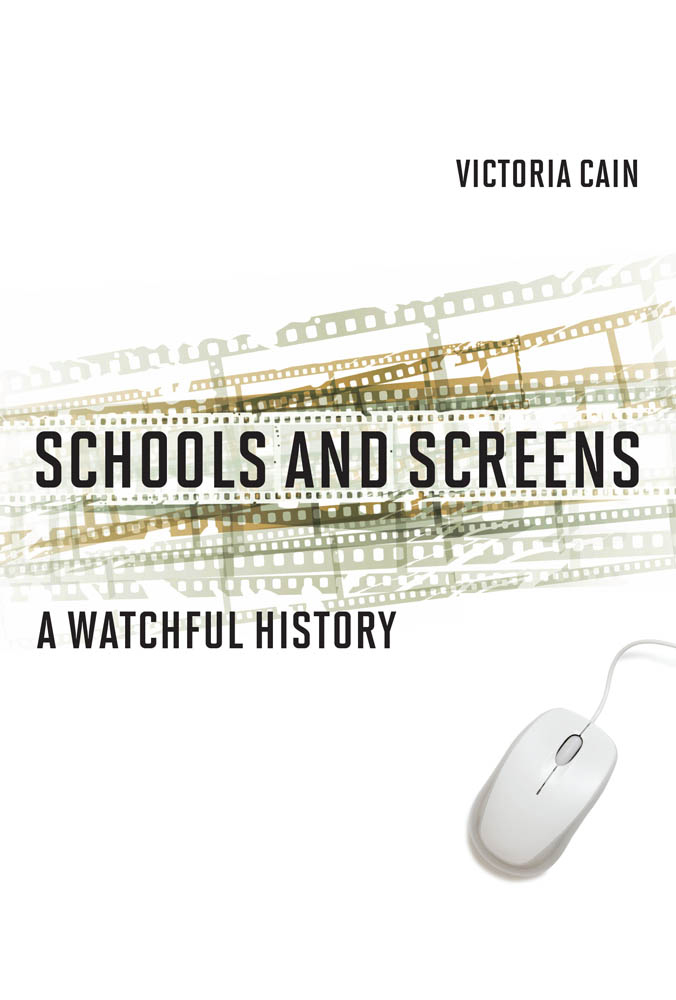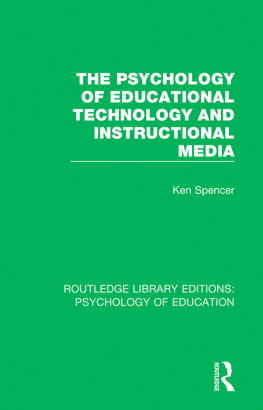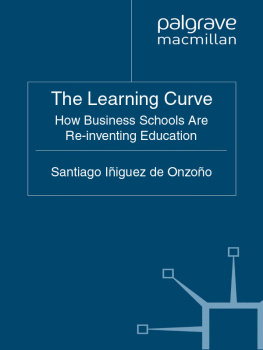Contents
Guide
Pagebreaks of the print version

SCHOOLS AND SCREENS
A WATCHFUL HISTORY
VICTORIA CAIN
THE MIT PRESS CAMBRIDGE, MASSACHUSETTS LONDON, ENGLAND
2021 Massachusetts Institute of Technology
All rights reserved. No part of this book may be reproduced in any form by any electronic or mechanical means (including photocopying, recording, or information storage and retrieval) without permission in writing from the publisher.
The MIT Press would like to thank the anonymous peer reviewers who provided comments on drafts of this book. The generous work of academic experts is essential for establishing the authority and quality of our publications. We acknowledge with gratitude the contributions of these otherwise uncredited readers.
Library of Congress Cataloging-in-Publication Data
Names: Cain, Victoria E. M., 1974- author.
Title: Schools and screens : a watchful history / Victoria Cain.
Description: Cambridge, Massachusetts : The MIT Press, [2021] | Includes bibliographical references and index.
Identifiers: LCCN 2020045119 | ISBN 9780262045230 (hardcover)
Subjects: LCSH: Audio-visual educationUnited StatesHistory20th century. | Educational technologyUnited StatesHistory20th century. | Mass media in educationUnited States. | EducationEffect of technological innovations onUnited States.
Classification: LCC LB1043 .C28 2021 | DDC 371.33--dc23
LC record available at https://lccn.loc.gov/2020045119
d_r0
For Seth, Vivian, and Caroline.
And for Alex, who loved the movies.
CONTENTS
INTRODUCTION
When officials at the National Association for the Advancement of Colored People (NAACP) learned in October 1937 that The Birth of a Nation was going to be screened at New York Citys DeWitt Clinton High School, they were incensed. The notoriously racist epic had provoked white attacks on African Americans in the 1910s and 1920s, and had helped to revive the Klan nationwide. Nervous at the prospect of violent protest, school administrators canceled the event.
Though it was ultimately banned from DeWitt Clinton, the film found its way into other US schools. It was available from a number of educational film libraries, and the well-respected Association of School Film Libraries, sponsored by the Rockefeller Foundation, recommended its use in American history courses.
We dont know for sure why schoolteachers continued to rely on The Birth of a Nation in the 1930s, but discussions of film use in educational journals offer some hints. Its probable that teachers screening the film saw themselves not as racists but rather as pedagogical reformers. English teachers who embraced the decades film appreciation movement might have used it as an example of the photoplay as an emerging literary genre.
To the NAACPs leaders, the mediums persuasive qualities were precisely what made The Birth of a Nation so dangerous: students would remember the film, unwittingly absorb its racism, and adjust their perspectives on the role of African Americans in US history accordingly.
The controversy over school use of The Birth of a Nation raised vexing questions about screens in schoolsquestions that would endure throughout the twentieth century. Why and how should screen media technologies be used in schools? Who stood to benefit from their use? Was it possible to control their impact? How would their use influence schools ultimate aim of training young people to become productive citizens? In principals offices and public libraries, in editorials and educational journals, educators, parents, and policy makers grappled with these questions, and often failed to agree on their answers. The stakes were high. At issue seemed to be no less than schools social roles and political responsibilities, no less than the nations future.

This book charts the complicated collisions between the twentieth-century United States two most powerful educational forces: schools and screens. From the interwar decades, when black-and-white images first flickered across school auditorium screens, to our swipe-and-click present, educational reformers have urged elementary and secondary schools to embrace moving pictures, television, and computers, or what communication scholar Morgan Ames has dubbed the charismatic machines in the larger ecosystem of educational technology.
From the 1930s on, champions of educational technology argued that school screens were essential tools for training future citizens. As early as 1915, psychologist Arland Weeks reported that under the spell of the screen, moviegoers became pliable and thus receptive to all manner of suggestions. The cheap-show place might, if applied to social ends, work in brief time advancement which otherwise would require centuries, Weeks wrote in an article titled The Mind of the Citizen. Control images, and civilization may be made to approximate any ideal. Based on this premise, interwar educational reformers seized on screen media technologies as a way to efficiently instill in youngsters the knowledge and skills they believed were critical to citizenship. The idea that interactions with screen media could successfully shape the minds, hearts, and behaviors of future citizens quickly became an article of faith among reformers eager to use technologies to tweak or transform education in the twentieth-century United States.
By the 1950s, reformers ambitions for screens had become more encompassing. Screens, announced successive generations of reformers, could raise the quality of teaching and learning in US schools, and would do so in ways that were clean, scalable, and cost effective. Screens, they promised, would help to solve the perennial problems of overcrowded classrooms, overworked teachers, and overlooked students. Finally, they maintained, screens would ease long-standing educational inequities, allowing the exceptional, the slow, and the underserved to excel as never before.
These were big claims to make, and school screens rarely realized these shining visions. Instead, schools adopted screen media technologies haltingly and used them sparingly. Even when educators successfully incorporated screens into classroom schedules, these tools rarely accomplished what reformers hoped they would. Why did school screens disappoint so often? And why, given this record, did reformers continue to preach that screens would, this time, disrupt and ultimately revolutionize American education?
Its tempting to answer these questions by turning to the technology. For much of the twentieth century, screen media technologies were costly to acquire, easy to break, and hard to use in classroom settings. Reels wore out. Receivers picked up snowstorms of static. Educational programs were lengthy, hokey, or amateurish. All of it required layers of bureaucracy to procure, manage, and maintain. Nor did screens fit easily into schools physical infrastructure, schedules, and curricula; as historian Larry Cuban has rightly observed, teachers saw little point in using them as a result. So the machines gathered dust as they sat, unused, in locked closets or infrequently used labs. Accordingly, as screen media technologies became better suited for classroom tasks, educators adopted them more readily. There is real truth in this interpretation: technologies are far more flexible and far better designed for classrooms than they used to be.






